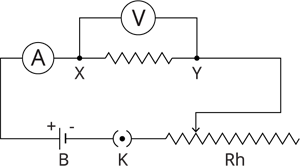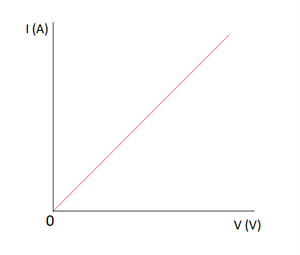
PUMPA - SMART LEARNING
எங்கள் ஆசிரியர்களுடன் 1-ஆன்-1 ஆலோசனை நேரத்தைப் பெறுங்கள். டாப்பர் ஆவதற்கு நாங்கள் பயிற்சி அளிப்போம்
Book Free DemoThe experiment requires four cells of 1.5\ V, 0.5\ m coil of nichrome wire, key, ammeter, and voltmeter.
Nichrome is an alloy of nickel, chromium, manganese, and iron metals.

Experimental set-up
- Connect the cell, nichrome wire, ammeter and key in series, and the voltmeter parallel to the circuit.
- First, connect only one cell in the circuit.
- Note down the current value in the ammeter and the potential difference across the nichrome wire XY in the voltmeter.
- Now, connect two cells in the circuit.
- Note down the current value in the ammeter and the potential difference across the nichrome wire XY in the voltmeter.
- Again, connect three cells in the circuit and note the current and the potential difference.
- Repeat the same steps using four cells in the circuit.
- Tabulate the values of current (I) and the potential difference (V) as shown in the table.
S.No | No. of cells used in the circuit | Current (I) through the nichrome wire (ampere) | Potential difference (V) across the nichrome wire (volt) | Resistance= \frac {V}{I} (Ohm) |
1. | 1 | |||
2. | 2 | |||
3. | 3 | |||
4. | 4 |
Graphical representation:
From the values obtained, it is observed that the values of \frac {V}{I} are the same. The graph between the potential difference (V) and the current (I) is a straight-line for a conductor since V is proportional to I. The line proves that \frac {V}{I} is a constant ratio.

The relation between potential difference and current
The straight-line shows that as the current through a metallic wire increases, the potential difference across the wire also increases linearly.